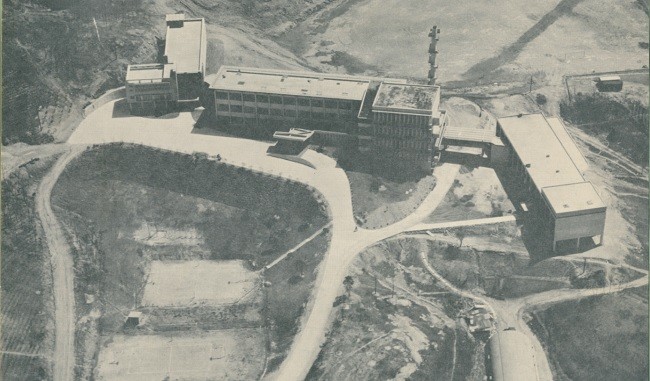오마하 출신 데슬렙스 오 수사의 A관 회고
페이지 정보
작성자 관리자 작성일17-05-12 15:10 조회14,993회 댓글0건관련링크
본문
“서강에서 보낸 시간은 커다란 감동입니다”
본관(A관) 비롯한 초창기 교내 건물 지어낸 아서 데슬렙스 전 예수회 수사 기고
제 이름은 아서 데슬렙스로, 현재 제 고향인 미국 네브라스카주 오마하에 살고 있습니다. 서강옛집 편집위원회로부터 서강대학교 본관 건축과 관련된 내용을 회고해달라는 요청을 받았습니다. 현재 92세이지만 60년 전의 일을 지난주에 일어난 일들 보다 더 잘 기억할 수 있습니다. 대체적으로 건강한 편이지만 예전만큼 보거나 듣지 못하고, 빨리 걷지도 못하며, 기억력은 점차 희미해지고 있습니다. 그것만 제외하곤 매우 좋은 상태입니다.
한국 이름은 오수사
1955년 한국에 처음 왔을 때, 제 성을 발음할 수 있는 사람이 아무도 없었습니다. 시간이 흐르면서 저는 ‘오수사’로 알려졌습니다. ‘오’는 제가 오마하 출신이기 때문이고, ‘수사’는 예수회 수사라서 붙은 한국식 이름입니다. 1955년 10월, 케네스 길로런 신부와 저는 인천에 도착해 게페르트 신부, 진성만 신부와 합류했습니다. 게페르트 신부는 도쿄에 있는 예수회 대학에서 30년간 일한 경험이 있었고, 진 신부는 젊은 한국인 예수회원이었습니다.
학교 설립 위한 첫 단추, 넓은 부지 확보
우리가 수행해야할 첫 번째 과제는 대학 설립을 위해 넓은 부지를 확보하는 일이었습니다. 저는 서울과 그 인근 지역에 이렇게나 많은 언덕과 산이 있는 줄 전혀 몰랐습니다. 특히, 이들 대부분 지역이 매우 가파르거나 견고한 암반이어서 건축에 적합하지 않겠다는 생각이 들었습니다. 노고산은 서울 한가운데 있었지만, 정상부가 그린벨트지역이라 건축 허가가 나지 않았습니다. 우리는 좀 더 큰 부지를 찾고 있었지만, 결국 이곳이 가장 적합한 곳이라는 결론을 내렸습니다.
대리인 여러 명을 동원해 1년 동안 부지 매입
노고산 주변 지역은 대부분 한사람이 소유하고 있었지만, 나머지 여러 개의 작은 토지구획들은 각기 다른 개인 소유였습니다. 대체로 논과 밭으로 사용되고 있었습니다. 부지 매입과 협상은 주로 게페르트 신부가 주도했습니다. 모든 땅을 여러 소유주로부터 매입하는 건 쉽지 않았습니다. 부지 매입 가격은 정해져 있었지만, 계약 일환으로서 작은 구획 토지 모두를 매입하는 건 우리의 의무였습니다. 우리는 땅을 매입하기 위해 여러 명의 대리인을 고용했습니다. 만약 외국인 한 명이 땅을 사들이고 있다는 사실을 땅 소유주들이 알게 되면 비싼 가격을 요구할 것이라 생각해서 계획한 일이었습니다. 그래서 모든 구획의 부지를 매입하는데 거의 1년이 걸렸습니다.
부지 매입 협상을 시작하면서 게페르트 신부는 동시에 문교부로부터 대학설립인가를 얻기 위해 많은 시간을 보냈습니다. 문교부는 우리가 학교 건물을 갖고 있지 않기에 설립 인가를 해줄 수없다고 했습니다. 게페르트 신부는 “건물이 완공되면 우리가 인가를 얻을 수 있다”라는 보증을 문교부에 요청했습니다. 문교부 관계자는 서면으로 보증해주지는 않았지만 “건물이 모습을 드러내면 곧바로 인가해주겠다”라고 구두 보증을 해주었습니다.
등굣길 진흙탕을 도로로 만들다
부지를 매입하고 나서 제일 먼저 해야 했던 일이 신촌 로터리에서부터 교문에 이르는 진흙탕 길을 불도저로 밀어서 도로로 만드는것이었습니다. 다행히 군인들이 불도저 작업을 도와주고, 소유권 표시를 위해 울타리를 칠 수 있도록 자재(울타리 기둥으로 사용된 4인치 중고 연료 파이프와 가시 철사)를 지원해주었습니다.
지역 주민들의 도움으로 파낸 우물
그런 다음 우물을 팠습니다. 이 지역으로 흐르는 물이 없었기 때문입니다. 우물 위치는 현재 지하주차장이 있는 곳이었습니다. 우물은 지역 주민들이 자원해서 모두 손으로 직접 판 작품입니다. 대략 직경 6피트, 깊이 20피트에 달한 우물을 파기 위해 작업자들은 로프를 이용해 구멍 속으로 들어가서 양동이로 흙을 퍼 올렸습니다. 굳은 땅이었음에도 10~15명의 사람들이 돌아가며 우물을 파냈습니다.
우물이 완성되자 우물에서 퍼 올린 물을 저장하기 위한 지하 저수조를 만들기 위해 노고산 중턱으로 이동했습니다. 우물과 마찬가지로 저수조도 모두 손으로 팠습니다. 저수조는 대략 깊이 10피트, 폭 10피트, 길이 20피트 규모였고, 산 중턱을 깎아서 만들었습니다. 저수조 한쪽은 청소와 유지관리를 위해, 다른 한쪽은 계속 물을 저장하도록 두 부분으로 만들었습니다. 저수조를 만들기 위해 매일 작업자들이 당일 작업에 필요한 모든 자재를 산위로 날라야했습니다. 모래, 자갈, 시멘트, 심지어는 시멘트를 섞기 위해 필요한 물까지 등에 지고 날랐습니다.
콘세트와 목공 기계의 활약
새 부지에 등장한 첫 번째 건물은 커다란 반원형 막사인 콘세트로 서울에서 구할 수 있었던, 불용 군수물자 및 간편 조립 자재 전문 회사 제품이었습니다. 그 콘세트는 현재의 체육관 자리에 위치했습니다.
게페르트 신부는 독일에서 커다란 목공 기계를 수입했는데 우리는 그 기계로 건물 내에서 사용할 가구와 여러 가지 용품을 만들었습니다. 저는 가구 만드는데 뛰어난 기술을 가진 목수 다섯 명을 고용했는데, 그 중 세 명은 제가 27년 뒤 서강에서 은퇴할 때까지 남아서 일했습니다. 그 기계는 제값을 했습니다. 모든 강의실용 책걸상은 물론, 행정실과 교수연구실 책상, 본관에 있던 작은 도서관용 서가, 중앙도서관 서가, 학습 공간에서 학생들이 사용하는 작은 탁자들, 그 외에 나무로 제작한 모든 물품은 콘세트 안에서 만들어졌습니다. 콘세트는 그 자리에 체육관이 들어서자 헐렸습니다.
본관 건물과 김중업
본관 설계는 건축가 김중업 씨에게 의뢰했는데, 프랑스에서 그 유명한 르꼬르뷔지에 밑에서 공부하고 막 귀국했던 젊은 한국인이었습니다. 그의 플로팅 건축 양식의 기본설계도와 모형은 감탄을 자아낼 정도로 멋있었습니다. 설계도면을 건설부에 제출했을 때 지붕 가장자리를 둘러싼 캔틸레버와 현관의 큰 캔틸레버가 이런 형태의 건축물은 한국에서 다소 생소하다는 이유로 거부당했습니다. 캔틸레버를 제외하고 모두 승인되었지만 캔틸레버가 건축미를 위해 필수 불가결한 요소였기 때문에 캔틸레버를 그대로 건축했습니다. 건물 사용 승인을 얻을 시점이 되자, 모두들 본관 건물에 반했고 다행히 사용승인서가 교부되었습니다. 건물이 완공되고 개강준비가 된 첫 번째 주는 도전의 시간이었습니다. 첫 수업은 1960년 4월 18일 이었는데, 바로 다음날 한국의 모든 학교가 4월 혁명으로 인해 문을 닫았습니다.
굴뚝, 그리고 수세식 화장실
제가 기억하는 또 다른 문제가 굴뚝이었습니다. 지상에서 꼭대기까지 굴뚝을 둘러싼 계단이 있었는데, 이곳에 올라가려는 모험심 강한 학생을 감시하는 게 무척 힘들었습니다. 또 물 공급 문제에도 직면했었습니다. 기후가 건조할 때는 수세식 화장실이 물 부족 현상을 불러왔기 때문입니다. 학생들에게 물을 아껴 쓰기 바란다는 안내문을 붙이긴 했지만 변기를 씻어 내리는데 대해 무슨 조치를 취할 수 있었겠습니까. 반 수세식이라는 게 있을 수 없으니까요.
늘어난 예수회원과 사제관 건립
1956년부터 1960년까지 학업을 마친 예수회원들이 한국어를 배우거나, 영어를 가르치거나, 무엇이든 도움 주겠다는 심정으로 서울에 속속 도착하기 시작했습니다. 김태관 신부, 박고영 신부, 프라이스 신부, 데일리 신부, 헙스트 신부, 민수사, 번브럭 신부, 트레이시 신부, 도일 수사, 미첼 수사를 비롯해 그 외에 몇몇이 해마다 한국에 들어왔습니다. 우리는 여러 곳에서 나누어 거주했는데 물도 없고 난방도 거의 안 되는 콘세트 내부의 방 세 개를 비롯해, 노고산 기슭에 있는 작은 가옥과 서소문동에 위치한 예수회 소유 주택에 몇 명씩 살았습니다. 우리는 앞으로 예수회원이 최소한 30명은 될 것이라 예측하고 그에 맞춰 사제관을 설계했습니다. 건축 설계자로는 이희태씨를 선정했습니다. 그는 후에 국립극장을 비롯해 서울 이곳저곳의 건축물 설계로 유명해졌습니다.
사제관을 지을 때 우리는 공사 청부업자를 쓰지 않고 대신 제가 그 역할을 맡았습니다. 우리는 목수와 공사 감독을 고용하고 전기, 난방, 배관, 벽돌쌓기 등을 위한 하도급업자들을 고용해 향후 건물을 짓는데도 활용했습니다.
숙련된 벽돌공을 찾는 일은 만만치 않았습니다. 벽돌공 다섯 명을 고용해본 끝에 벽돌을 제대로 쌓을 수 있는 기술자 한명을 찾아냈습니다. 그는 제가 서강에 근무하는 동안 모든 벽돌을 쌓은 기술자입니다.
직접 공사 청부업자로 참여
제가 직접 공사 청부업자(계약자, 도급업자) 역할을 했던 이 방식을 우리는 C관, 강당, 산업문제연구소, 과학관을 지을 때도 사용했습니다. 이후 정부는 이처럼 자가 공사계약방식을 사용하는 학교들로부터 세금을 징수하지 않고 있음을 알게 되고, 청부업자는 정부에 등록된 청부업자 허가증이 필요하다는 내용의 법을 만들었습니다. 나아가 청부업자는 매년 지난해 보다 더 많은 평수를 건축해야 했습니다. 우리는 해마다 더 많은 평수의 건축 계획을 수립할 수 없다고 결론 내렸기에 다시 외부 공사 청부업자를 이용하기로 했습니다. 이후 저는 계속 기획위원회를 책임지며 건축가와 설계 작업을 진행하는 한편, 매일 시공 작업을 점검하는 일에 매진했습니다.
서강은 커다란 영광
아쉽게도 저는 학생들을 직접 가르치지는 않았기에, 서강대학 규모가 커지면서 학생들과 접촉할 일이 거의 없게 되었습니다. 그래도 모두가 모두를 알던 초창기에는 친구가 많았습니다. 가끔 오마하에 살고 있는 졸업생들이나 근처를 여행하는 졸업생들이 안부 인사차 우리 집에 잠시 들릅니다. 이 분들의 방문을 늘 감사히 여기고 있으며, 이 분들 덕분에 많은 추억이 떠오릅니다.
서강은 제 인생의 커다란 부분입니다. 서강에서 아내를 만났고, 가정을 이루었습니다. 서강대학교와의 인연은 정말 커다란 영광이었습니다. 서강에서 보낸 시간은 감동입니다.
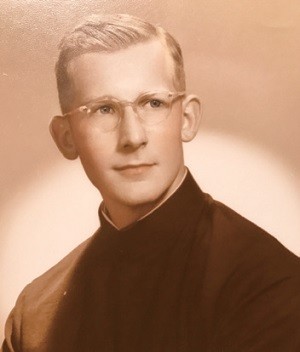
아서 데슬렙스 (Arthur Dethlefs)는 누구인가?
게페르트, 프라이스, 헙스트, 길로런, 진성만 신부와 더불어 서강 설립자 6인으로 평가 받는 아서 데슬렙스 전 예수회 수사는 1925년 5월 27일 미국 네브래스카주 오마하에서 3남 1녀 중 차남으로 태어났다. 예수회 고등학교인 크레이튼 PREP 졸업(1942년 5월 15일)과 동시에 예수회에 입회했고, 1955년 10월 15일 한국에 도착했다. 학교 설립 준비 및 교내 건물 건축 업무를 맡았다. 본관, 사제관(예수회 공동체), 학생회관, 과학관, 메리홀, 산업문제연구소, 신학원, 강원도 하조대 별장, 체육관, 도서관, 다산관, 김대건관 건축에 이바지했다. 초창기에는 학교가 직영으로 건물 공사에 나섰고, 이후 법 규정이 생기면서 직영으로 시공이 어려워지자 감리 업무를 맡았다.
모교 관리처장, 재무처장 및 예수회 사무국장을 역임했고, 학교 제반 업무를 관리했다. 1979년 5월 예수회를 탈회했지만, 당시 델마 스킬링스태드 총장 신부가 학교 관련 업무를 계속해줄 것을 요청해 1985년 5월 정년퇴직할 때까지 서강을 위해 일했다. 1979년 6월 23일 절두산 성당에서 정일우 신부 주례로 혼배미사를 올렸고, 슬하에 아들이 한 명 있다. 모교 정년퇴직 이후 필리핀으로 이주해 '소년의 집' 공사를 맡았고, 1986년 11월 고향인 오마하로 돌아갔다. 1987년부터 오마하에 자리한 고아 및 불우 청소년들을 위한 시설 ‘BOY'S TOWN’에서 근무해 1999년까지 일했다.
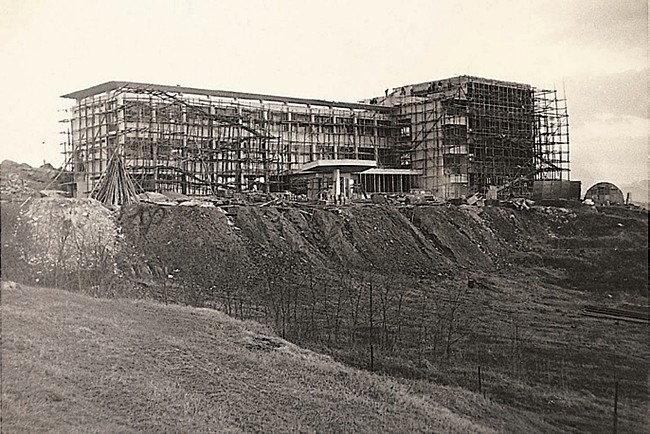
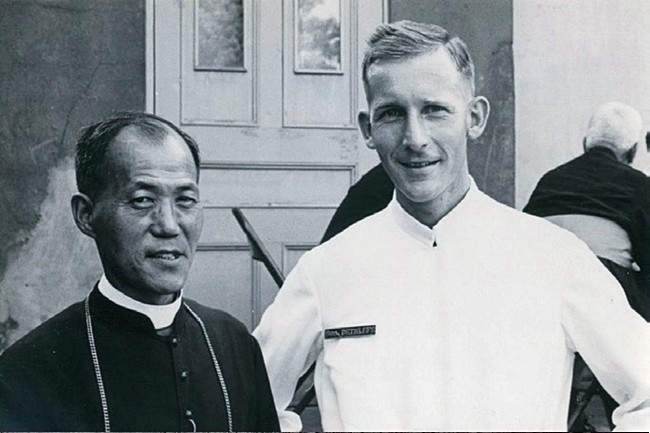
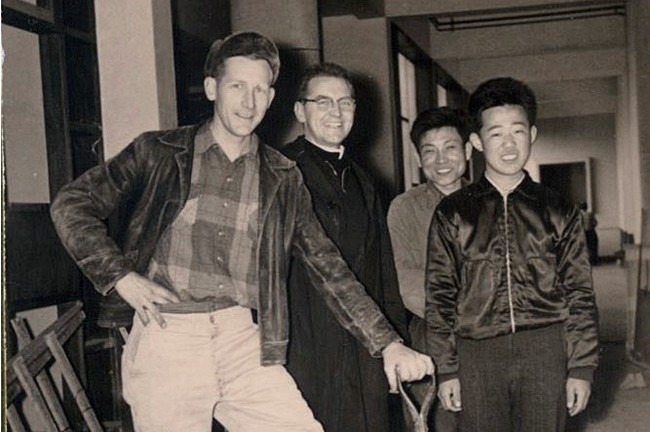
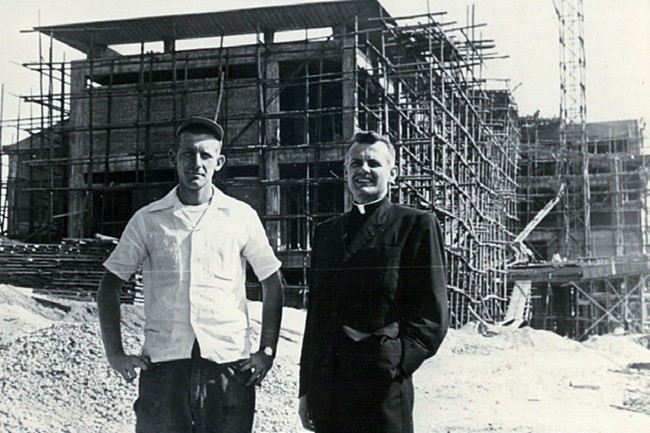
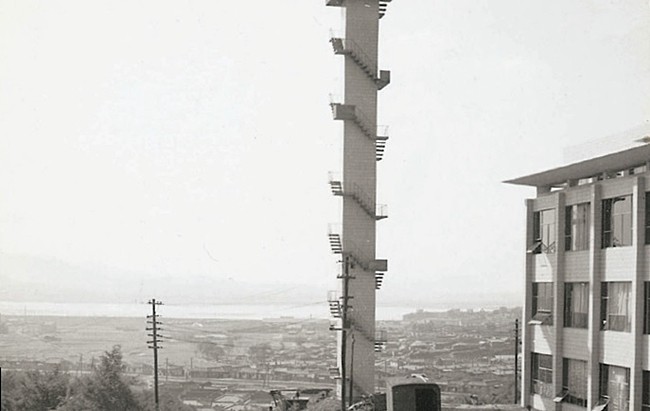
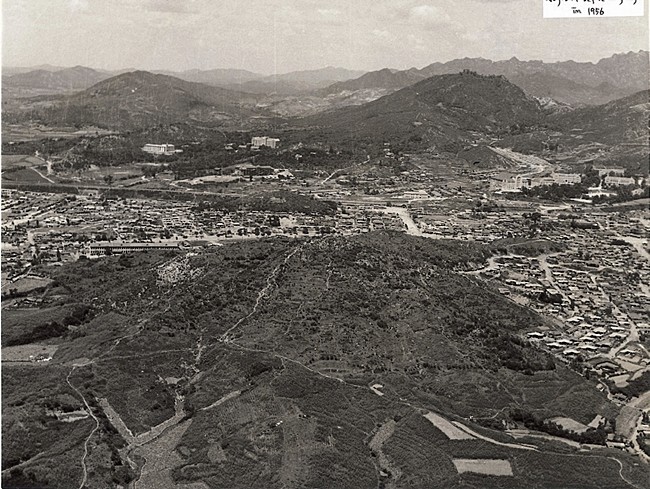
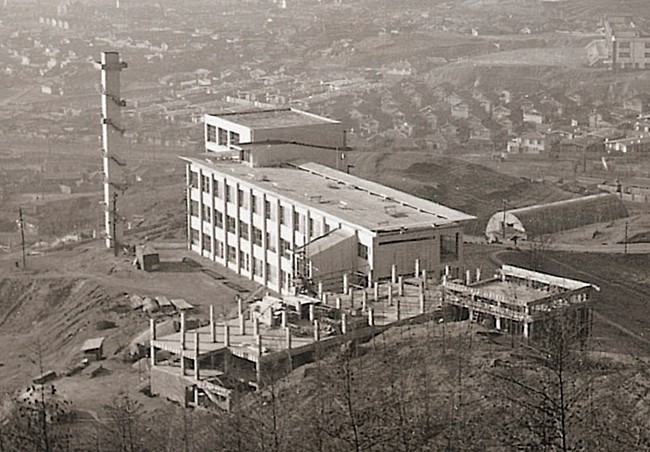
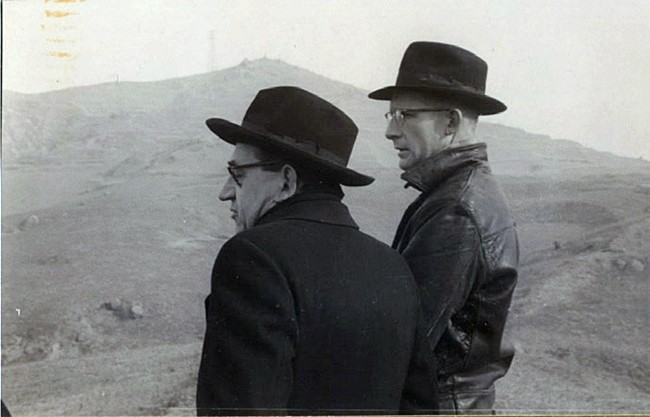
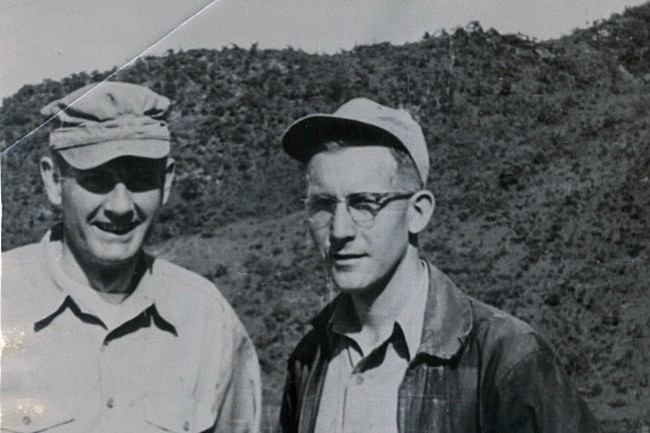
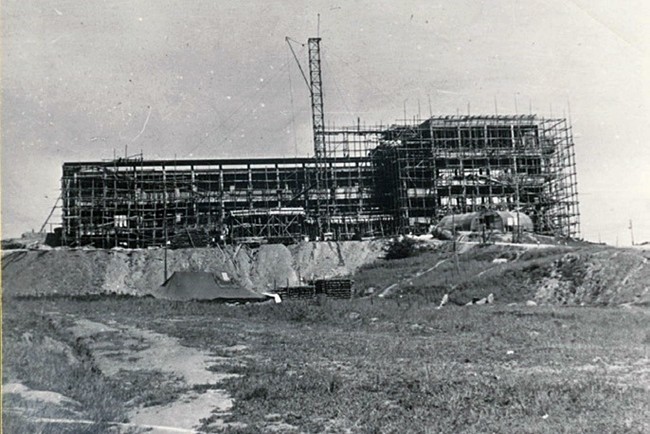
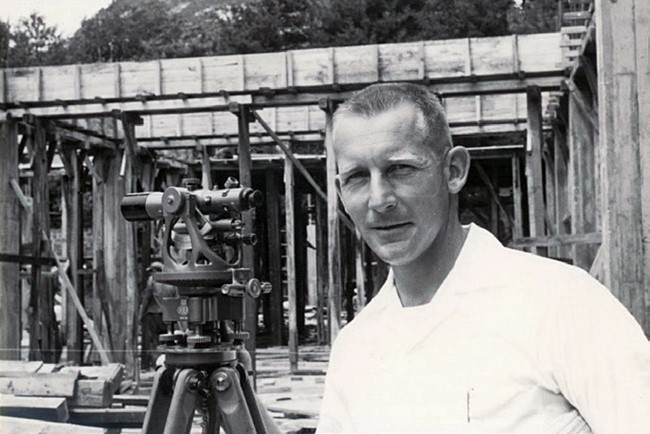
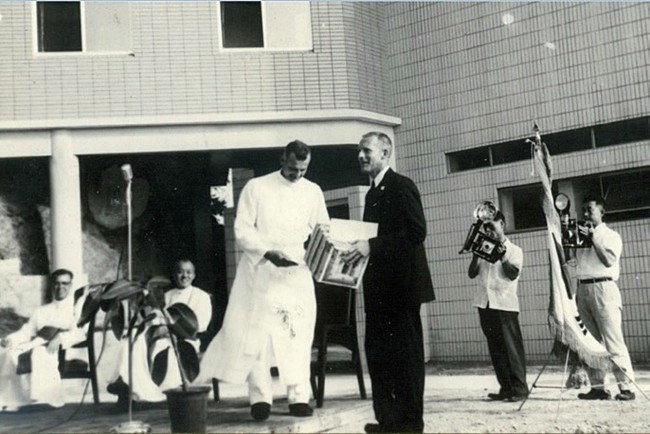
아래는 데슬렙스 전 예수회 수사께서 보내온 영문 편지 원본입니다.
My name is Art Dethlefs. I now live in Omaha, Nebraska, my birthplace. I was asked to recall anything regarding the construction of the Administration Building at Sogang University.
When I came to Korea in 1955, no one could pronounce my family name, and so as time went by, I gradually became known as Oh Susa, my new name. Oh because I was born in Omaha, and Susa – the Korean word for a Jesuit Brother. I am now 92 years old and can remember things from sixty years ago better than things that happened last week. In general, my health is good. I do not see as well, hear as well, can’t walk as fast as I used to, and my memory is slipping away, but other than that, I am in pretty good shape!
In October 1955, Fr. Ken Killoren and I landed in Incheon and joined Fr. Geppert, who had thirty years of experience at the Jesuit University in Tokyo, and Fr. Peter Jin, a young Korean Jesuit priest.
The first item we needed to accomplish was to find a piece of land large enough for the University. I never realized Seoul and the surrounding area had so many hills and mountains, most of which were too steep or solid rock, which I felt would not be suitable for construction. Nogosan was right in the middle of Seoul, but the top part was Green Belt Area and construction was not allowed in the Green Belt Area. In addition, we were looking for a larger piece of land, but in the end, we decided it was the best location available. The area was owned mostly by one man, but many smaller plots in this area was owned by other individuals and used mostly for rice and vegetable farming. The purchasing and negotiations of the land was mostly handled by Fr. Geppert. The school purchased all the land from the majority owner. The price of the land was set, but as part of the contract, it was the majority owner’s responsibility to purchase all the smaller plots of land. The one owner, realizing the other land owners would be asking for a premium if they knew the ultimate buyer was one, foreign buyer and to maximize his profits, employed several different agents to purchase the land for him. The acquisition of all the pieces took nearly a year to complete.
As the negotiations for the land was taking place, Fr. Geppert was also spending many hours at the Ministry of Education trying to get permission to start a new University. The MOE said we had no building, hence no permit! Fr. Geppert wanted a guarantee that if the building was finished, we would get the permit. The MOE did not give Fr. Geppert a guarantee in writing but gave him verbal assurance the permit would be granted as soon as a building existed.
Once the land was acquired, one of the first things we had to do was to bulldoze a road from the mud path that used to run from the Sin Chon Rotary to the entrance of Sogang. The military helped with bulldozing operations and also provided the fence materials (used, 4” fuel pipes used as fence posts and barb wire) which marked the property.
Next, since there was no running water in the area, we dug a well in the area where the underground parking garage is now located. The well was all hand dug by the local people in the area who were willing to work. The hole was approximately 6 feet in diameter and 20 feet deep. Workers were dropped into the hole by rope, and dirt from the hole pulled up by buckets. A crew of about 10 or 15 people worked in shifts to dig through the hard ground.
Once the well was dug, we went half way up Nogosan to build an underground reservoir to store the water that was pumped from the well. Like the well, the reservoir was all dug by hand. The reservoir was approximately 10 foot deep, 10 foot wide, and 20 foot long and cut into the side of the mountain. The reservoir was built in two sections to allow for cleaning and maintenance in one section while the other still held water. To build the reservoir, every day the workers had to carry all the materials needed for that day up the mountain. The workers carried on their backs the sand, gravel, cement and even the water needed to mix the cement.
The first building to appear on the new property was a large Quonset which was available in Seoul from a company that specialized in Army Surplus materials and quick assembly of the materials. The Quonset was located where the gym is located now. Fr. Geppert imported a large carpentry machine from Germany which we used to make the building furniture and many other things. I hired five carpenters who were highly skilled in making furniture. Three of them were still with Sogang when I retired 27 years later. That machine soon paid for itself. All the tablet arm chairs for all the classrooms, all the desks for the administrative and teacher’s offices, the book shelves for the little library in A building, all the bookshelves in the main library, the small tables used by students in the study areas, and almost anything made with wood was made in that Quonset. The Quonset was torn down when the gym was constructed in that area.
To help with the design of the building, Mr. Kim Chung Up, a young Korean who had just returned from France where he had been studying under the famous Le Corbusier, was hired. His preliminary drawings and models with floating style of architecture were greatly admired. When plans were sent to the Minister of Construction and Planning, the cantilever around the edges of the roof and the large cantilever at the front entrance was rejected, as this type of structural work was rather new in Korea. Everything was approved except for the cantilevers, but since the cantilevers were integral to the beauty of the building, they were constructed. When it came time to get the Occupancy Permit, everyone was impressed with the building and the permit was granted.
Another problem I remember was with the chimney. With steps surrounding the chimney from the ground to the top, it was difficult to keep adventurous students from climbing it!
We also faced problems with the water supply. When the weather was dry, the flush toilets started depleting the water supply. Signs were put up asking students to conserve water, but what could we do about toilet flushes? Half a flush?
With the building complete and classes ready to begin, the first week of school was a challenge. The first day of classes was on April 18, 1960 and the next day, all the schools in Korea were closed due to the April Revolution.
From the years 1956 to 1960, Jesuits who were finishing their studies began to arrive in Seoul to study Korean, provide assistance in any way, and to do private teaching of English. Father Kim Tae Kwon S.J., Father Park Young, S.J., Father Price S.J., Father Daly S.J., Father Herbst S.J., Minister Susa, Father Bernbrock S.J., Father Tracy S.J., Mr. Doyle, Mr. Mitchell and more came each year. We were living everywhere, three rooms in the Quonset (no water, little heat), others in the small houses located at the foot of Nogosan, and others in the house we owned in So So Mun Dong. We projected there would be at least 30 Jesuits in the future, so a residence was planned for that many people. Mr. Lee Hi Tae was chosen as the architect. He later became famous for his designs of Halls and Theaters around Seoul. With this building, we did not hire a general contractor, but instead I took on this role. We hired a carpenter and labor foreman. Subcontractors for the electrical, heating, plumbing, brick layers, etc. were hired and used on future buildings. It was a challenge to find a skilled brick layer, though. Five different crews were employed before I found one that could properly lay bricks. This gentleman eventually laid all the bricks during my time at Sogang.
This was the system, with myself as the general contractor, we used for the C Kwan, Auditorium, the Labor Institute, and all three sections for the Science building. After that the government began to realize that they were not collecting taxes from schools which were using this self-contracting method and made a law stating the contractor needed a Contractor’s license registered with the Government and each year the contractor had to build more pyong than the previous year. We decided we could not project building more pyong every year and decided to use outside general contractors again. After that I continued to head the planning committee, work with the architects on plans, and daily checked the work.
Unfortunately I did not teach any classes and I had little contact with the students as the University began to expand, but I had many friends in those early years when everybody knew everybody.
Occasionally, graduates who live in the Omaha area or those that are travelling by will stop by our home to say hello. These visits are always appreciated and bring but many memories.
Sogang has been a large part of my life. It is also where I met my wife and started a family. It was truly my privilege to have been associated with Sogang University and I remember my time there with great affection.
본관(A관) 비롯한 초창기 교내 건물 지어낸 아서 데슬렙스 전 예수회 수사 기고
제 이름은 아서 데슬렙스로, 현재 제 고향인 미국 네브라스카주 오마하에 살고 있습니다. 서강옛집 편집위원회로부터 서강대학교 본관 건축과 관련된 내용을 회고해달라는 요청을 받았습니다. 현재 92세이지만 60년 전의 일을 지난주에 일어난 일들 보다 더 잘 기억할 수 있습니다. 대체적으로 건강한 편이지만 예전만큼 보거나 듣지 못하고, 빨리 걷지도 못하며, 기억력은 점차 희미해지고 있습니다. 그것만 제외하곤 매우 좋은 상태입니다.
한국 이름은 오수사
1955년 한국에 처음 왔을 때, 제 성을 발음할 수 있는 사람이 아무도 없었습니다. 시간이 흐르면서 저는 ‘오수사’로 알려졌습니다. ‘오’는 제가 오마하 출신이기 때문이고, ‘수사’는 예수회 수사라서 붙은 한국식 이름입니다. 1955년 10월, 케네스 길로런 신부와 저는 인천에 도착해 게페르트 신부, 진성만 신부와 합류했습니다. 게페르트 신부는 도쿄에 있는 예수회 대학에서 30년간 일한 경험이 있었고, 진 신부는 젊은 한국인 예수회원이었습니다.
학교 설립 위한 첫 단추, 넓은 부지 확보
우리가 수행해야할 첫 번째 과제는 대학 설립을 위해 넓은 부지를 확보하는 일이었습니다. 저는 서울과 그 인근 지역에 이렇게나 많은 언덕과 산이 있는 줄 전혀 몰랐습니다. 특히, 이들 대부분 지역이 매우 가파르거나 견고한 암반이어서 건축에 적합하지 않겠다는 생각이 들었습니다. 노고산은 서울 한가운데 있었지만, 정상부가 그린벨트지역이라 건축 허가가 나지 않았습니다. 우리는 좀 더 큰 부지를 찾고 있었지만, 결국 이곳이 가장 적합한 곳이라는 결론을 내렸습니다.
대리인 여러 명을 동원해 1년 동안 부지 매입
노고산 주변 지역은 대부분 한사람이 소유하고 있었지만, 나머지 여러 개의 작은 토지구획들은 각기 다른 개인 소유였습니다. 대체로 논과 밭으로 사용되고 있었습니다. 부지 매입과 협상은 주로 게페르트 신부가 주도했습니다. 모든 땅을 여러 소유주로부터 매입하는 건 쉽지 않았습니다. 부지 매입 가격은 정해져 있었지만, 계약 일환으로서 작은 구획 토지 모두를 매입하는 건 우리의 의무였습니다. 우리는 땅을 매입하기 위해 여러 명의 대리인을 고용했습니다. 만약 외국인 한 명이 땅을 사들이고 있다는 사실을 땅 소유주들이 알게 되면 비싼 가격을 요구할 것이라 생각해서 계획한 일이었습니다. 그래서 모든 구획의 부지를 매입하는데 거의 1년이 걸렸습니다.
부지 매입 협상을 시작하면서 게페르트 신부는 동시에 문교부로부터 대학설립인가를 얻기 위해 많은 시간을 보냈습니다. 문교부는 우리가 학교 건물을 갖고 있지 않기에 설립 인가를 해줄 수없다고 했습니다. 게페르트 신부는 “건물이 완공되면 우리가 인가를 얻을 수 있다”라는 보증을 문교부에 요청했습니다. 문교부 관계자는 서면으로 보증해주지는 않았지만 “건물이 모습을 드러내면 곧바로 인가해주겠다”라고 구두 보증을 해주었습니다.
등굣길 진흙탕을 도로로 만들다
부지를 매입하고 나서 제일 먼저 해야 했던 일이 신촌 로터리에서부터 교문에 이르는 진흙탕 길을 불도저로 밀어서 도로로 만드는것이었습니다. 다행히 군인들이 불도저 작업을 도와주고, 소유권 표시를 위해 울타리를 칠 수 있도록 자재(울타리 기둥으로 사용된 4인치 중고 연료 파이프와 가시 철사)를 지원해주었습니다.
지역 주민들의 도움으로 파낸 우물
그런 다음 우물을 팠습니다. 이 지역으로 흐르는 물이 없었기 때문입니다. 우물 위치는 현재 지하주차장이 있는 곳이었습니다. 우물은 지역 주민들이 자원해서 모두 손으로 직접 판 작품입니다. 대략 직경 6피트, 깊이 20피트에 달한 우물을 파기 위해 작업자들은 로프를 이용해 구멍 속으로 들어가서 양동이로 흙을 퍼 올렸습니다. 굳은 땅이었음에도 10~15명의 사람들이 돌아가며 우물을 파냈습니다.
우물이 완성되자 우물에서 퍼 올린 물을 저장하기 위한 지하 저수조를 만들기 위해 노고산 중턱으로 이동했습니다. 우물과 마찬가지로 저수조도 모두 손으로 팠습니다. 저수조는 대략 깊이 10피트, 폭 10피트, 길이 20피트 규모였고, 산 중턱을 깎아서 만들었습니다. 저수조 한쪽은 청소와 유지관리를 위해, 다른 한쪽은 계속 물을 저장하도록 두 부분으로 만들었습니다. 저수조를 만들기 위해 매일 작업자들이 당일 작업에 필요한 모든 자재를 산위로 날라야했습니다. 모래, 자갈, 시멘트, 심지어는 시멘트를 섞기 위해 필요한 물까지 등에 지고 날랐습니다.
콘세트와 목공 기계의 활약
새 부지에 등장한 첫 번째 건물은 커다란 반원형 막사인 콘세트로 서울에서 구할 수 있었던, 불용 군수물자 및 간편 조립 자재 전문 회사 제품이었습니다. 그 콘세트는 현재의 체육관 자리에 위치했습니다.
게페르트 신부는 독일에서 커다란 목공 기계를 수입했는데 우리는 그 기계로 건물 내에서 사용할 가구와 여러 가지 용품을 만들었습니다. 저는 가구 만드는데 뛰어난 기술을 가진 목수 다섯 명을 고용했는데, 그 중 세 명은 제가 27년 뒤 서강에서 은퇴할 때까지 남아서 일했습니다. 그 기계는 제값을 했습니다. 모든 강의실용 책걸상은 물론, 행정실과 교수연구실 책상, 본관에 있던 작은 도서관용 서가, 중앙도서관 서가, 학습 공간에서 학생들이 사용하는 작은 탁자들, 그 외에 나무로 제작한 모든 물품은 콘세트 안에서 만들어졌습니다. 콘세트는 그 자리에 체육관이 들어서자 헐렸습니다.
본관 건물과 김중업
본관 설계는 건축가 김중업 씨에게 의뢰했는데, 프랑스에서 그 유명한 르꼬르뷔지에 밑에서 공부하고 막 귀국했던 젊은 한국인이었습니다. 그의 플로팅 건축 양식의 기본설계도와 모형은 감탄을 자아낼 정도로 멋있었습니다. 설계도면을 건설부에 제출했을 때 지붕 가장자리를 둘러싼 캔틸레버와 현관의 큰 캔틸레버가 이런 형태의 건축물은 한국에서 다소 생소하다는 이유로 거부당했습니다. 캔틸레버를 제외하고 모두 승인되었지만 캔틸레버가 건축미를 위해 필수 불가결한 요소였기 때문에 캔틸레버를 그대로 건축했습니다. 건물 사용 승인을 얻을 시점이 되자, 모두들 본관 건물에 반했고 다행히 사용승인서가 교부되었습니다. 건물이 완공되고 개강준비가 된 첫 번째 주는 도전의 시간이었습니다. 첫 수업은 1960년 4월 18일 이었는데, 바로 다음날 한국의 모든 학교가 4월 혁명으로 인해 문을 닫았습니다.
굴뚝, 그리고 수세식 화장실
제가 기억하는 또 다른 문제가 굴뚝이었습니다. 지상에서 꼭대기까지 굴뚝을 둘러싼 계단이 있었는데, 이곳에 올라가려는 모험심 강한 학생을 감시하는 게 무척 힘들었습니다. 또 물 공급 문제에도 직면했었습니다. 기후가 건조할 때는 수세식 화장실이 물 부족 현상을 불러왔기 때문입니다. 학생들에게 물을 아껴 쓰기 바란다는 안내문을 붙이긴 했지만 변기를 씻어 내리는데 대해 무슨 조치를 취할 수 있었겠습니까. 반 수세식이라는 게 있을 수 없으니까요.
늘어난 예수회원과 사제관 건립
1956년부터 1960년까지 학업을 마친 예수회원들이 한국어를 배우거나, 영어를 가르치거나, 무엇이든 도움 주겠다는 심정으로 서울에 속속 도착하기 시작했습니다. 김태관 신부, 박고영 신부, 프라이스 신부, 데일리 신부, 헙스트 신부, 민수사, 번브럭 신부, 트레이시 신부, 도일 수사, 미첼 수사를 비롯해 그 외에 몇몇이 해마다 한국에 들어왔습니다. 우리는 여러 곳에서 나누어 거주했는데 물도 없고 난방도 거의 안 되는 콘세트 내부의 방 세 개를 비롯해, 노고산 기슭에 있는 작은 가옥과 서소문동에 위치한 예수회 소유 주택에 몇 명씩 살았습니다. 우리는 앞으로 예수회원이 최소한 30명은 될 것이라 예측하고 그에 맞춰 사제관을 설계했습니다. 건축 설계자로는 이희태씨를 선정했습니다. 그는 후에 국립극장을 비롯해 서울 이곳저곳의 건축물 설계로 유명해졌습니다.
사제관을 지을 때 우리는 공사 청부업자를 쓰지 않고 대신 제가 그 역할을 맡았습니다. 우리는 목수와 공사 감독을 고용하고 전기, 난방, 배관, 벽돌쌓기 등을 위한 하도급업자들을 고용해 향후 건물을 짓는데도 활용했습니다.
숙련된 벽돌공을 찾는 일은 만만치 않았습니다. 벽돌공 다섯 명을 고용해본 끝에 벽돌을 제대로 쌓을 수 있는 기술자 한명을 찾아냈습니다. 그는 제가 서강에 근무하는 동안 모든 벽돌을 쌓은 기술자입니다.
직접 공사 청부업자로 참여
제가 직접 공사 청부업자(계약자, 도급업자) 역할을 했던 이 방식을 우리는 C관, 강당, 산업문제연구소, 과학관을 지을 때도 사용했습니다. 이후 정부는 이처럼 자가 공사계약방식을 사용하는 학교들로부터 세금을 징수하지 않고 있음을 알게 되고, 청부업자는 정부에 등록된 청부업자 허가증이 필요하다는 내용의 법을 만들었습니다. 나아가 청부업자는 매년 지난해 보다 더 많은 평수를 건축해야 했습니다. 우리는 해마다 더 많은 평수의 건축 계획을 수립할 수 없다고 결론 내렸기에 다시 외부 공사 청부업자를 이용하기로 했습니다. 이후 저는 계속 기획위원회를 책임지며 건축가와 설계 작업을 진행하는 한편, 매일 시공 작업을 점검하는 일에 매진했습니다.
서강은 커다란 영광
아쉽게도 저는 학생들을 직접 가르치지는 않았기에, 서강대학 규모가 커지면서 학생들과 접촉할 일이 거의 없게 되었습니다. 그래도 모두가 모두를 알던 초창기에는 친구가 많았습니다. 가끔 오마하에 살고 있는 졸업생들이나 근처를 여행하는 졸업생들이 안부 인사차 우리 집에 잠시 들릅니다. 이 분들의 방문을 늘 감사히 여기고 있으며, 이 분들 덕분에 많은 추억이 떠오릅니다.
서강은 제 인생의 커다란 부분입니다. 서강에서 아내를 만났고, 가정을 이루었습니다. 서강대학교와의 인연은 정말 커다란 영광이었습니다. 서강에서 보낸 시간은 감동입니다.

아서 데슬렙스 (Arthur Dethlefs)는 누구인가?
게페르트, 프라이스, 헙스트, 길로런, 진성만 신부와 더불어 서강 설립자 6인으로 평가 받는 아서 데슬렙스 전 예수회 수사는 1925년 5월 27일 미국 네브래스카주 오마하에서 3남 1녀 중 차남으로 태어났다. 예수회 고등학교인 크레이튼 PREP 졸업(1942년 5월 15일)과 동시에 예수회에 입회했고, 1955년 10월 15일 한국에 도착했다. 학교 설립 준비 및 교내 건물 건축 업무를 맡았다. 본관, 사제관(예수회 공동체), 학생회관, 과학관, 메리홀, 산업문제연구소, 신학원, 강원도 하조대 별장, 체육관, 도서관, 다산관, 김대건관 건축에 이바지했다. 초창기에는 학교가 직영으로 건물 공사에 나섰고, 이후 법 규정이 생기면서 직영으로 시공이 어려워지자 감리 업무를 맡았다.
모교 관리처장, 재무처장 및 예수회 사무국장을 역임했고, 학교 제반 업무를 관리했다. 1979년 5월 예수회를 탈회했지만, 당시 델마 스킬링스태드 총장 신부가 학교 관련 업무를 계속해줄 것을 요청해 1985년 5월 정년퇴직할 때까지 서강을 위해 일했다. 1979년 6월 23일 절두산 성당에서 정일우 신부 주례로 혼배미사를 올렸고, 슬하에 아들이 한 명 있다. 모교 정년퇴직 이후 필리핀으로 이주해 '소년의 집' 공사를 맡았고, 1986년 11월 고향인 오마하로 돌아갔다. 1987년부터 오마하에 자리한 고아 및 불우 청소년들을 위한 시설 ‘BOY'S TOWN’에서 근무해 1999년까지 일했다.












아래는 데슬렙스 전 예수회 수사께서 보내온 영문 편지 원본입니다.
My name is Art Dethlefs. I now live in Omaha, Nebraska, my birthplace. I was asked to recall anything regarding the construction of the Administration Building at Sogang University.
When I came to Korea in 1955, no one could pronounce my family name, and so as time went by, I gradually became known as Oh Susa, my new name. Oh because I was born in Omaha, and Susa – the Korean word for a Jesuit Brother. I am now 92 years old and can remember things from sixty years ago better than things that happened last week. In general, my health is good. I do not see as well, hear as well, can’t walk as fast as I used to, and my memory is slipping away, but other than that, I am in pretty good shape!
In October 1955, Fr. Ken Killoren and I landed in Incheon and joined Fr. Geppert, who had thirty years of experience at the Jesuit University in Tokyo, and Fr. Peter Jin, a young Korean Jesuit priest.
The first item we needed to accomplish was to find a piece of land large enough for the University. I never realized Seoul and the surrounding area had so many hills and mountains, most of which were too steep or solid rock, which I felt would not be suitable for construction. Nogosan was right in the middle of Seoul, but the top part was Green Belt Area and construction was not allowed in the Green Belt Area. In addition, we were looking for a larger piece of land, but in the end, we decided it was the best location available. The area was owned mostly by one man, but many smaller plots in this area was owned by other individuals and used mostly for rice and vegetable farming. The purchasing and negotiations of the land was mostly handled by Fr. Geppert. The school purchased all the land from the majority owner. The price of the land was set, but as part of the contract, it was the majority owner’s responsibility to purchase all the smaller plots of land. The one owner, realizing the other land owners would be asking for a premium if they knew the ultimate buyer was one, foreign buyer and to maximize his profits, employed several different agents to purchase the land for him. The acquisition of all the pieces took nearly a year to complete.
As the negotiations for the land was taking place, Fr. Geppert was also spending many hours at the Ministry of Education trying to get permission to start a new University. The MOE said we had no building, hence no permit! Fr. Geppert wanted a guarantee that if the building was finished, we would get the permit. The MOE did not give Fr. Geppert a guarantee in writing but gave him verbal assurance the permit would be granted as soon as a building existed.
Once the land was acquired, one of the first things we had to do was to bulldoze a road from the mud path that used to run from the Sin Chon Rotary to the entrance of Sogang. The military helped with bulldozing operations and also provided the fence materials (used, 4” fuel pipes used as fence posts and barb wire) which marked the property.
Next, since there was no running water in the area, we dug a well in the area where the underground parking garage is now located. The well was all hand dug by the local people in the area who were willing to work. The hole was approximately 6 feet in diameter and 20 feet deep. Workers were dropped into the hole by rope, and dirt from the hole pulled up by buckets. A crew of about 10 or 15 people worked in shifts to dig through the hard ground.
Once the well was dug, we went half way up Nogosan to build an underground reservoir to store the water that was pumped from the well. Like the well, the reservoir was all dug by hand. The reservoir was approximately 10 foot deep, 10 foot wide, and 20 foot long and cut into the side of the mountain. The reservoir was built in two sections to allow for cleaning and maintenance in one section while the other still held water. To build the reservoir, every day the workers had to carry all the materials needed for that day up the mountain. The workers carried on their backs the sand, gravel, cement and even the water needed to mix the cement.
The first building to appear on the new property was a large Quonset which was available in Seoul from a company that specialized in Army Surplus materials and quick assembly of the materials. The Quonset was located where the gym is located now. Fr. Geppert imported a large carpentry machine from Germany which we used to make the building furniture and many other things. I hired five carpenters who were highly skilled in making furniture. Three of them were still with Sogang when I retired 27 years later. That machine soon paid for itself. All the tablet arm chairs for all the classrooms, all the desks for the administrative and teacher’s offices, the book shelves for the little library in A building, all the bookshelves in the main library, the small tables used by students in the study areas, and almost anything made with wood was made in that Quonset. The Quonset was torn down when the gym was constructed in that area.
To help with the design of the building, Mr. Kim Chung Up, a young Korean who had just returned from France where he had been studying under the famous Le Corbusier, was hired. His preliminary drawings and models with floating style of architecture were greatly admired. When plans were sent to the Minister of Construction and Planning, the cantilever around the edges of the roof and the large cantilever at the front entrance was rejected, as this type of structural work was rather new in Korea. Everything was approved except for the cantilevers, but since the cantilevers were integral to the beauty of the building, they were constructed. When it came time to get the Occupancy Permit, everyone was impressed with the building and the permit was granted.
Another problem I remember was with the chimney. With steps surrounding the chimney from the ground to the top, it was difficult to keep adventurous students from climbing it!
We also faced problems with the water supply. When the weather was dry, the flush toilets started depleting the water supply. Signs were put up asking students to conserve water, but what could we do about toilet flushes? Half a flush?
With the building complete and classes ready to begin, the first week of school was a challenge. The first day of classes was on April 18, 1960 and the next day, all the schools in Korea were closed due to the April Revolution.
From the years 1956 to 1960, Jesuits who were finishing their studies began to arrive in Seoul to study Korean, provide assistance in any way, and to do private teaching of English. Father Kim Tae Kwon S.J., Father Park Young, S.J., Father Price S.J., Father Daly S.J., Father Herbst S.J., Minister Susa, Father Bernbrock S.J., Father Tracy S.J., Mr. Doyle, Mr. Mitchell and more came each year. We were living everywhere, three rooms in the Quonset (no water, little heat), others in the small houses located at the foot of Nogosan, and others in the house we owned in So So Mun Dong. We projected there would be at least 30 Jesuits in the future, so a residence was planned for that many people. Mr. Lee Hi Tae was chosen as the architect. He later became famous for his designs of Halls and Theaters around Seoul. With this building, we did not hire a general contractor, but instead I took on this role. We hired a carpenter and labor foreman. Subcontractors for the electrical, heating, plumbing, brick layers, etc. were hired and used on future buildings. It was a challenge to find a skilled brick layer, though. Five different crews were employed before I found one that could properly lay bricks. This gentleman eventually laid all the bricks during my time at Sogang.
This was the system, with myself as the general contractor, we used for the C Kwan, Auditorium, the Labor Institute, and all three sections for the Science building. After that the government began to realize that they were not collecting taxes from schools which were using this self-contracting method and made a law stating the contractor needed a Contractor’s license registered with the Government and each year the contractor had to build more pyong than the previous year. We decided we could not project building more pyong every year and decided to use outside general contractors again. After that I continued to head the planning committee, work with the architects on plans, and daily checked the work.
Unfortunately I did not teach any classes and I had little contact with the students as the University began to expand, but I had many friends in those early years when everybody knew everybody.
Occasionally, graduates who live in the Omaha area or those that are travelling by will stop by our home to say hello. These visits are always appreciated and bring but many memories.
Sogang has been a large part of my life. It is also where I met my wife and started a family. It was truly my privilege to have been associated with Sogang University and I remember my time there with great affection.
댓글목록
등록된 댓글이 없습니다.

